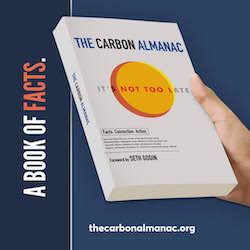by Gary Mintchell | Jul 8, 2025 | Asset Performance Management, Process Control
Process automation companies like sending press releases when they get a new project. This news in interesting on two fronts. One, it details the use of drones and robots for monitoring and maintenance. Two, this details Yokogawa and Shell working together on the project.
Yokogawa Electric Corp. announced that it has formalized a long-term agreement with Shell Global Solutions International B.V. (“Shell”) to integrate and further develop technologies for utilizing robots and drones in plant monitoring and maintenance. Under the agreement, Yokogawa will add an advanced machine vision tool called Operator Round by Exception (ORE), developed by Shell, into its own OpreX Robot Management Core. The enhanced software service will be made available by Yokogawa to customers in the energy, chemicals, and other industries.
ORE is a digital solution that uses machine vision and AI analytics to enable robots to autonomously perform a number of tasks in the operator round process, such as reading gauges and checking for leaks and machinery issues. It is the result of a two-year collaborative effort within Shell, which combined machine vision strategy with deep capabilities in the field of integrity management, remote site inspection, and corrosion management.
OpreX Robot Management Core is a key product in Yokogawa’s robot solutions. The software helps customers maintain their facilities in a safer and more efficient manner by integrating the management of various types of robots that perform plant maintenance tasks conventionally carried out by humans. When connected to a plant’s control and safety systems, the data acquired can be used to issue instructions to robots, thus enabling the first step to be taken toward autonomous plant operations. The addition of Shell’s ORE technology will significantly increase the number of use cases available to customers through OpreX Robot Management Core.
Moving forward, Yokogawa robotics operations will deploy at two Shell facilities as a pilot into how robotics and drones can deliver value through efficiencies in plant monitoring and maintenance.
This collaboration is the first key milestone for Yokogawa working alongside Shell in the collaboration space at the Energy Transition Campus Amsterdam, which was created by Shell in 2022 to provide a platform for collaboration between companies, societal organizations, governments, and universities to work on tomorrow’s energy solutions. Shell and Yokogawa have also agreed to collaborate on an aligned R&D roadmap to further develop and enhance the machine vision technology, ensuring continuous innovation and improvement. This collaboration underscores both companies’ commitment to providing cutting-edge solutions to the energy and industrial sectors.
by Gary Mintchell | Jul 7, 2025 | Data Management
This news concerns unstructured data management. I wrote about Datadobi several times in 2021 and 2022. Not much since. They have released a new version of their StorageMAP, its “heterogeneous unstructured data management solution.”
StorageMAP 7.3 enables organizations to create policy-driven workflows, act on data more precisely, and migrate between S3-compatible platforms while maintaining compliance.
StorageMAP 7.3 introduces policy-driven workflows that allow administrators to define tasks executed by its workflow engine in response to specific triggers, such as a time schedule. A “dry run” feature facilitates reviewing the scope of a policy before full execution.
These new workflows support a wide range of use cases, including periodic automated archival, creating data pipelines to feed GenAI applications, identifying and relocating non-business-related data to a quarantine area, and more. Once policies are published, StorageMAP runs the workflows on schedule without requiring manual supervision.
In addition, StorageMAP 7.3 adds support for granular file-level deletes. Administrators can identify files that match specific criteria and save them as input to a targeted delete job, which StorageMAP will execute. Each delete job generates a report that documents the job’s details and outcome.
This functionality addresses situations where a coarse-grained directory-level deletion is not possible due to the presence of both relevant and disposable data. By enabling precise file selection, StorageMAP ensures that administrators can apply accurate and effective deletion policies.
Object migration enhancements
StorageMAP 7.3 also enhances its core object migration functionality by supporting the migration of locked objects between S3-compatible storage systems. This allows compliant data stored in a Write Once Read Many (WORM) format to be relocated across different vendor platforms while retaining its retention date and legal holds.
To support cost and performance objectives, the solution includes the ability to select the S3 storage class during object migration or replication. By specifying the desired storage class at the time of the job, organizations can avoid unnecessary post-migration lifecycle policies and ensure data is written directly to the appropriate tier.
by Gary Mintchell | Jul 1, 2025 | Generative AI
Deepgram is an intriguing company. Have they solved the problem that Apple still misses with Siri or Amazon with its new Alexa? They bill themselves as “World’s Only Enterprise-Ready, Real-Time, and Cost-Effective Conversational AI API.” They have developed a voice AI platform.
In addition, its CEO Scott Stephenson has become a YouTuber with a YouTube channel (billed as a podcast, but it isn’t one), “The Scott Stephenson AI Show” — A No-Hype, Deep-Dive Podcast on the AI Revolution. Oh, he’s also on Spotify. I am not. I download podcasts on Overcast. I haven’t the time to watch many 40+ minute YouTube videos. I’ve watched much of this one. He does provide a knowledgeable overview in this episode.
Back to the Deepgram API.
Deepgram announced the general availability (GA) of its Voice Agent API, a single, unified voice-to-voice interface that gives developers full control to build context-aware voice agents that power natural, responsive conversations. Combining speech-to-text, text-to-speech, and large language model (LLM) orchestration with contextualized conversational logic into a unified architecture, the Voice Agent API gives developers the choice of using Deepgram’s fully integrated stack (leveraging industry-leading Nova-3 STT and Aura-2 TTS models) or bringing their own LLM and TTS models. It delivers the simplicity developers love and the controllability enterprises need to deploy real-time, intelligent voice agents at scale. Today, companies like Aircall, Jack in the Box, StreamIt, and OpenPhone are building voice agents with Deepgram to save costs, reduce wait times, and increase customer loyalty.
I can no longer download and play with software like in the old days. I’d suggest that if you’re a developer and need a voice assistant, try it out.
For teams taking the DIY route, the challenge isn’t just connecting models but also building and operating the entire runtime layer that makes real-time conversations work. Teams must manage live audio streaming, accurately detect when a user has finished speaking, coordinate model responses, handle mid-sentence interruptions, and maintain a natural conversational cadence. While some platforms offer partial orchestration features, most APIs do not provide a fully integrated runtime. As a result, developers are often left to manage streaming, session state, and coordination logic across fragmented services, which adds complexity and delays time to production.
Deepgram’s Voice Agent API removes this burden by providing a single, unified API that integrates speech-to-text, LLM reasoning, and text-to-speech with built-in support for real-time conversational dynamics. Capabilities such as barge-in handling and turn-taking prediction are model-driven and managed natively within the platform. This eliminates the need to stitch together multiple vendors or maintain custom orchestration, enabling faster prototyping, reduced complexity, and more time focused on building high-quality experiences.
In addition to the Voice Agent API, organizations seeking broader integrations can leverage Deepgram’s extensive partner ecosystem, including Kore.ai, OneReach.ai, Twilio and others, to access comprehensive conversational AI solutions and services powered by Deepgram APIs.
Key capabilities include:
- Flexible Deployment: Run the complete voice stack in cloud, VPC, or on-prem environments to meet enterprise requirements for security, compliance, and performance.
- Runtime-Level Orchestration: Deepgram’s runtime supports mid-session control, real-time prompt updates, model switching, and event-driven signaling to adapt agent behavior dynamically.
- Bring-Your-Own Models: Teams can integrate their own LLMs or TTS systems while retaining Deepgram’s orchestration, streaming pipeline, and real-time responsiveness.
In addition to control and performance, the Voice Agent API is built for cost efficiency across large-scale deployments. When teams run entirely on Deepgram’s vertically integrated stack, pricing is fully consolidated at a flat rate of $4.50 per hour. This provides predictable, all-in-one billing that simplifies planning and scales with usage.
by Gary Mintchell | Jun 25, 2025 | Robots, Sensors, Software, Technology
This is part two of my reports from the Hexagon Live Global Event. I had been to one previous event for only a day. Hexagon is such a large company comprised of many parts that I had a bit of struggle understanding it all.
The core Hexagon involves measurement, metrology. They have precision measurement tools for the small, medium, and very large targets. Tools for building applications complement these instruments.
Hexagon also comprises much software, having acquired Intergraph years ago and others since. Company focus has become easier with the announced spinoff of much of the software business into a new company called Octave.
Octave
Mattias Stenberg, who is leading Octave, explained the new company’s focus taking the musical analogy of an octave—taking it to the next level. The core of the new company consists of these four businesses from Hexagon:
- Asset Lifecycle Intelligence—Intelligence that drives decision-making efficiency and lifecycle value creation
- SIG—Safety, Infrastructure, and Geospatial—Act on information to save lives, improve infrastructure and enhance services
- ETQ—ETQ Reliance—ETQ Reliance is a cloud-native quality management system solution (QMS), powered by an agile platform that drives 40+ best-in-class applications adaptable to your unique environment. ETQ is the leading provider of quality, EHS and compliance management SaaS software, trusted by the world’s strongest brands.
- Bricsys—Hexagon AB, a global leader in digital solutions, today announced the acquisition of Bricsys, a fast-growing developer of CAD (computer-aided design) software that has been at the forefront of providing open, collaborative construction technology solutions since its founding in 2002. Its CAD platform, BricsCAD, supports 2D/3D general, mechanical, and sheet metal design and building information modelling (BIM) in one system.
I don’t know if this was supposed to be another musical reference, but as a guitarist, I’ll take it as such. Octave is Intelligence at Scale. They see themselves not just as a builder of software, but as helping customers evolve, adapt, predict, prevent by providing pre-trained agents. The platforms will be embedded, context aware, mission critical systems, validated.
This comment struck me. I concluded my first report with the thought that software becomes more powerful, yet it’s still trying to solve the problems I had in 1977. With power comes complexity. Stenberg noted a survey they conducted with C-level executives see more software, more complexity, more dashboards…and yet, less actual visibility. Systems that don’t talk to each other creating silos.
My concluding thought on my last essay was that we must not have a technical problem—we must have a people problem.
Only 20% of execs told them they are getting something from digital transformation. OK, I can’t resist thinking of an irony—yet they order their employees to use AI, or else???
They envision a process where customers build digital first, where the digital twin is a reality (he calls it “mirrorworld”). These will enable the movement from reactive to predictive (another future vision I’ve written about for 20 years or more).
A final vision—Create self-aware, resilient infrastructure.
Robotics
Moving on to another product line—robotics. I shot a short video of Hexagon’s newest robot—Aeon. This “humanoid”, or human-form-factor, robot exhibits quite advanced ability to do the work of human assemblers. When I asked why they developed the robot to look and act like a robot, they told me that existing work stations are designed for humans. Therefore, this is an easy replacement for non-existent human workers on the assembly line.
Digital Twins
Returning to digital twins. I spoke with Jeremy Treverrow about uses of digital twins. Initially, customers could use Hexagon’s precision measurement technology to create a digital twin of a component part. Perhaps this is a service and repair part no longer in production with perhaps no good design information existing.
Using the Hexagon Design X software set, the imported digital twin can be exported in an igis file, used for simulation, and can even design a manufacturing process around it.
A lot of power.
by Gary Mintchell | Jun 21, 2025 | Data Management, Software
I recently wrote an article for my website about technology complexity within industrial technology. Engineering managers have stood at conferences pleading with the standards and technology developers to find ways to simplify interfaces and connectivity.
OPC Foundation keeps adding layers of companion specifications. ODVA members listened to engineers who need help implementing EtherNet/IP (or just ethernet networks) and proceeded to ignore the plea. Paul Miller, an analyst at Forrester reported from a survey where 90% of executives reported data problems from their digital transformation. 71% reported measurement related data problems.
Mattias Stenberg, head of the new software company spinning out from Hexagon called Octave, reported from another survey his group has performed that only one in five executives thought they were getting any value from digital transformation.
The Vice President of Product Development of the company where I worked in the 1970s (back in the day before layers of vice presidents) offered a job to me to leave manufacturing and become his data manager. He was prescient. 45 years later, companies are still trying to manage data. Solutions have become more complex, technology has advance exponentially, yet we still have problems gathering, refining, contextualizing, and using data.
These thoughts were generated from the Hexagon Live Global Conference I attended this week in Las Vegas. I have a lot of trouble wrapping my head around just who Hexagon is. Evidently, I’m not alone. But the company is making it easier by splitting off four groups into Octave.
The simplest definition, yet also most definitive, came from Ola Rollén Hexagon Chairman recounting the company’s 25-year history of growth. “Hexagon is the world’s most sophisticated measuring tape.” Indeed, several of my interviews delved into the world of accurately measuring the very large and the very small. This year’s slogan, “When it has to be done right.”
The new ATS800 laser tracker can easily capture complex shapes with up to micron precision. The company released Autonomous Metrology Suite, software developed on its cloud-based Nexus platform that is designed to transform quality control across manufacturing industries worldwide. By removing all coding from coordinate measuring machine (CMM) workflows, it helps manufacturers speed up critical R&D and manufacturing processes as experienced metrologists become harder to find.
Hexagon and several partners are solving what has been an intractable and troubling problem—data locked into paper-based formats such as pdf files. Several demonstrated the ability to read text and pdf documents that are unstructured data, use a form of AI to tag the data, and then extract to a useable database. This is truly a great advance. Several workforce solutions designed to give companies the ability to attract younger workers into technical positions were demonstrated on the show floor.
Stenberg talked of another problem executives cited—data silos that prevent people from using data to make good decisions. I have been writing about solutions designed to break through data silos for 25 years. I’m beginning to wonder if it is not a technology problem. Perhaps it’s a people problem.
by Gary Mintchell | Jun 19, 2025 | Robots, Software
Everyone wants to be NVIDIA’s best friend. This friendship focuses on the world of robotics and simulation. In brief:
Flexiv launches the Flexiv-Isaac Bridge App, empowering developers to design, test, and deploy force-controlled robotics applications in hyper-realistic virtual environments.
The interesting thing is the force-controlled part. I remember an application I wrote about a few years ago where the developer of a robotic prosthetic arm had a design goal of being able to pick up a grape with squishing it. I watch these technologies closely anticipating even greater use cases that will help us all.
Flexiv announced release of the Flexiv-Isaac Bridge App, bringing high-fidelity force-control simulation to NVIDIA’s Isaac Sim. This partnership enables robotics developers and end-users to program, model, test, and deploy complex force-controlled, AI-empowered robotics applications in simulated environments that closely mimic contact-rich real-world conditions.
To highlight this new capability, Flexiv’s engineering team released a video in which a simulated Rizon 4 robot completed the classic Tower of Hanoi puzzle in Isaac Sim. The simulation exactly replicated the robot’s real-world movements and showcased its force-controlled “hole search” and compliant movement capabilities. This underscores Flexiv’s commitment to minimizing the sim-to-real gap to improve training, programming, and operational performance. Additionally, this demonstration emphasizes Flexiv’s drive to ensure seamless compatibility with one of the world’s most widely used virtual robotics platforms.
Isaac Sim enables developers to build hyper-realistic, detailed virtual environments, while Flexiv’s Elements programming system allows robotic applications to be effortlessly programmed and refined. With the Bridge App connecting these tools, customers are empowered to create applications, build digital twins of their facilities, design mission profiles, and run high-fidelity virtual tests before deploying robots in real-world scenarios. These simulations provide valuable insights into application performance, risk assessment, and operational efficiency.
By leveraging both Isaac Sim’s ability to generate real-world simulations and Flexiv Elements’ support for simulating real-world force-based actions, Flexiv aims to accelerate the application development cycle. With developers now able to refine robot movements and iteratively test applications from anywhere in the world, development costs can be significantly reduced, while remote support can ensure greater reliability in real-world deployments.
In its continued commitment to community-driven innovation, Flexiv has made its Tower of Hanoi codebase freely available on GitHub. This initiative encourages developers, academics, and customers to build upon Flexiv’s work, fostering a collaborative ecosystem that promotes creativity and customization.
By combining force-controlled robotics and effortless programming with NVIDIA’s cutting-edge simulation tools, Flexiv is revolutionizing development workflows. This leads the way toward safer, smarter, and more adaptable robotic systems that transform both application development and human-robot interaction.




